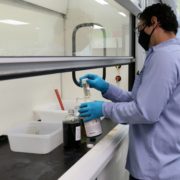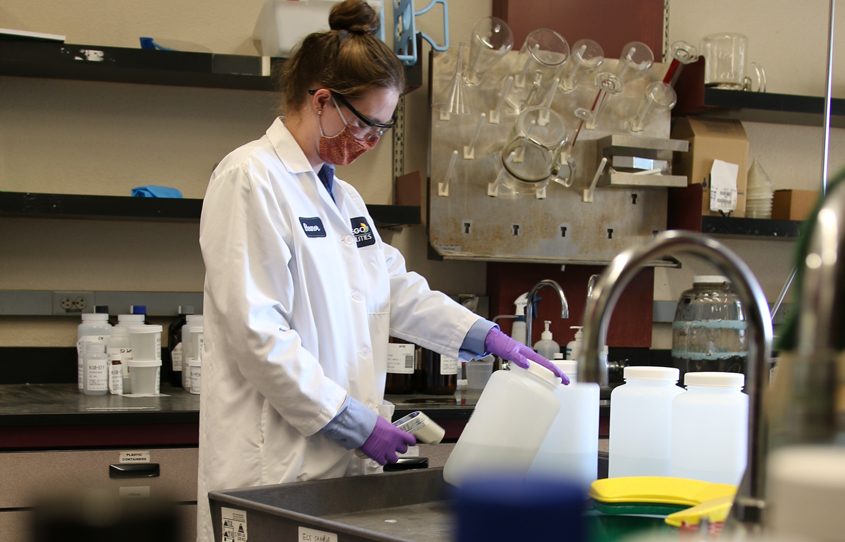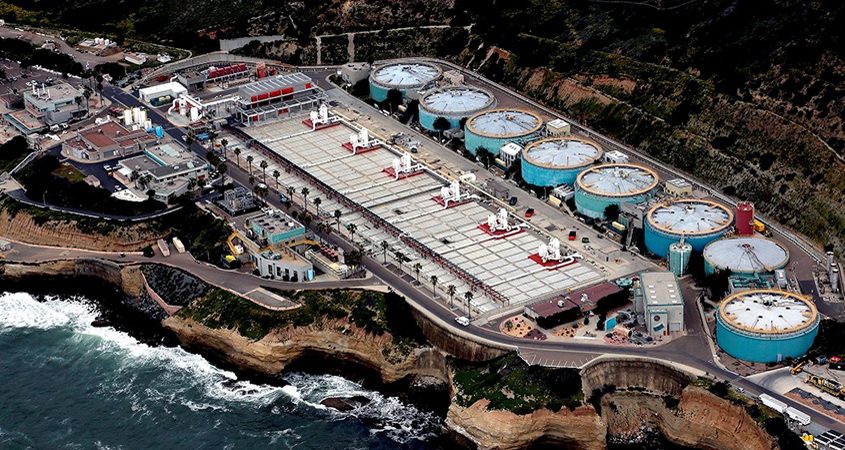What is the most important leadership quality in dealing with the unprecedented challenges facing the industry?
Today’s leaders need to be inclusive, and focus on cooperation, engagement, and partnerships. The issues are so complex; the problem-solving that needs to happen requires many stakeholders. I think we have a lot more pressures regarding inclusivity, including issues related to water affordability. One challenge with engagement and inclusion is bringing in folks who haven’t necessarily been part of the water conversation before, both from a policy as well as an employment standpoint.
As a leader, one constant is knowing and admitting that you don’t know everything. You’re scanning the environment and you’re pivoting and reacting with information that is coming in real time.
The Water Authority has been making huge investments in supply reliability over the last several decades—improving storage and water supply diversification. How does that impact your leadership within the region during the current drought?
From our standpoint, we approach water as a statewide issue. We are all Californians working 24/7 to ensure access to water for everyone. We want to be part of the solution.
Our wake-up call to the changing availability of water was during the drought of the late ’80s and early ’90s. We invested heavily in new supplies and infrastructure, storage, piping to move water where it’s needed, asset management to ensure our pipelines aren’t leaking, and those sorts of things. And even compared to the drought of 2012 through ’16, we’re in a better position today because we have realized the full implementation of all of our new sources of supply. In addition, we’ve had such heavy conservation and water use efficiency. We use 50 percent less water today per capita than we did in 1990. And that is a big part of how we’ve met the challenge.
From a regional perspective, we’re not all the same within the state. We don’t have the same assets and issues. At the same time, the Water Authority is looking at how can we help other areas of the state. As an example, we have groundwater stored in the Central Valley and our board has approved working with any agency that is interested in that water and who can pipe the water to its destination, because we have reliable supplies without it.
The hard thing is, you have to really look at what’s going to move the needle. Is it going to move the needle if we save an acre-foot of water here in San Diego? Is that going to help Northern California? No, because we take very little water off the Bay Delta. But, if we could be able to take some of our water out of storage and provide that to another area of the state, or if we could get storage in Lake Mead so that the Colorado River is not as impacted—those are things we can do to help. I’d like to be able to focus in that area and continue to support the economy and the quality of life in San Diego County in a way that folks here have invested in for many years.
What are some of the strategies the Water Authority is deploying to address climate change resiliency and adaptation?
Because of the investments that we’ve made in raising the height of San Vicente Dam, it’s doubled the storage capacity there. The facility is owned by the City of San Diego, but the Water Authority did the dam raise. We’re partnering with the city to create a large storage hydroelectric facility there, which is closed loop and could provide up to 500MW of power and utilize renewables in a way that, when the sun goes down, the hydroelectric facility can be put on and we can utilize those resources. You might ask, “Why are you looking at that?” It’s because there’s an opportunity to monetize existing assets and create a revenue stream for the city and the Water Authority to help offset water costs, while helping to combat climate change. It also helps with the stability of the power grid. We had power outages in San Diego last August and if we had this project online, we wouldn’t have had those issues.
What are some of the obstacles you are facing in achieving the Water Authority’s desired level of resiliency and supply reliability?
In terms of the San Diego region, we have very high supply reliability. I think the biggest challenge for us is the affordability component and how to balance having those resources and ensuring the ability of folks to pay for it over the long-term. That is very challenging and concerning. We’re part of a new caucus at the Metropolitan Water District of Southern California (MWD) focused on disadvantaged communities and addressing how resources get allocated to disadvantaged communities. As an example, when there’s conservation funding available, how is that shared? And how can those communities take advantage of it?
Statewide, we are seeing benefits of greater regionalization while simultaneously an increase in the localization of supplies. Where do you think we need to be on that spectrum as a state to meet these incredible challenges? How do you think this applies to the San Diego region?
I think we as water managers do a better job when we look at the big picture as opposed to our space alone. The reality of implementing that big picture is very challenging. We see a microcosm of that here in the region, and we’re really looking at the One Water initiative at MWD and how we best connect with that.
There is a very different dynamic than 20 years ago when many local retail agencies weren’t looking at developing their own supplies. They were counting on the Water Authority to provide that reliability.
The next increment of water supply is coming from our member agencies, it’s not going to be the Water Authority’s projects. For example, acceptance for water reuse is a game changer. So is the possibility of regulation and legislation that would eliminate wastewater discharge. This has increased the interest in agencies wanting to do their own water reuse projects. We are recognizing this shift and taking into account when these projects are going to come online in our urban water management plan. It’s about how to find that balance and work cooperatively, and we’re at ground zero. I think other regions are going to be entering this conversation as time goes by, and I wonder what role the state is going to play in terms of overlaying policy that may usurp the local or regional planning processes, and how will that shape our investments?
Agencies are having to do so much more with so much less—that goes for water as well as funds. In many ways we need to look to innovation to fill that gap. How are you incorporating innovation in the culture of the Water Authority?
Innovation is critical to the Water Authority, and we have a formalized innovation program that engages every department. It’s really something that is a sense of pride for employees. They are encouraged and expected to think innovatively and assess how to do things differently. That kind of thinking includes things like how we communicate financial information to the departments at a level that’s very actionable as opposed to reams of spreadsheets. How do you get actionable data to our own crews developing tools to be able to assess the condition of 310 miles of large-diameter pipes in our system? The range of ideas is enormous.
Since COVID, so much has changed. What changes have you experienced or proactively planned to enhance your organization’s culture?
The one thing that I’m super proud of, and especially doing it during COVID, is evolving the nature of our culture as an organization by creating new values that resonated and reflected who we are today. This was done through a committee of employees at all different levels in the organization called a Values Discovery Team, and they were trained in appreciative inquiry, a strengths-based positive approach to leadership and organizational change.
They interviewed employees that they didn’t work with directly. Out of those interviews emerged stories of who we are at our best, and out of that came seven values. Previously, our values were very much focused on getting the work accomplished. With these updated values, the first four of the seven have a human element to them, which is a significant change in terms of the culture of this organization.
We still expect excellence, we still innovate, but we also hear different perspectives. We value diversity. We engage in the tough conversations. It just has a very different flavor. And I believe that’s what will keep this organization strong—that there’s a balance of both the human and the work.







